 W
WArabian Nights: Sabaku no Seirei-ō is a 1996 Japan-exclusive Role-playing video game developed by Pandora Box and published by Takara for the Super Famicom.
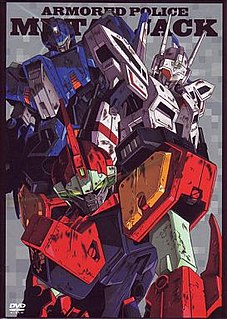 W
WArmored Police Metal Jack is a Japanese animated TV series co-produced by Sunrise, TV Tokyo and I&S BBDO. The series was broadcast by TV Tokyo affiliates in 1991 on the Monday 5:30PM time slot and aired weekly from April 7 to December 23, lasting 37 episodes.
 W
WArmored Trooper VOTOMS is a Japanese military science fiction mecha anime series that has undergone several incarnations. The original 1983 television series was created by Ryosuke Takahashi and Sunrise, featuring mechanical designs by Kunio Okawara. Following directly in the footsteps of Takahashi's previous series, Fang of the Sun Dougram, VOTOMS continued the trend towards hard science in the mecha anime subgenre. The series was supplemented by numerous original video animation releases, and also inspired a number of spin-off works whose media ranges from serialized light novels to video games. The TV anime was originally licensed by the now-defunct Central Park Media who released the series on DVD and VHS. Currently, it is licensed by Maiden Japan, a unit of Section23 Films, who also released all OVAs other than Armor Hunter Mellowlink.
 W
WArt of Fighting is a fighting video game trilogy that were released for the Neo Geo platform in the early 1990s. It was the second fighting game franchise created by SNK, following the Fatal Fury series and is set in the same fictional universe as a prequel to the Fatal Fury series. The original Art of Fighting was released in 1992, followed by two sequels: Art of Fighting 2 in 1994 and Art of Fighting 3: The Path of the Warrior in 1996.
 W
WBanana Prince is a 2D platform game for the Nintendo Entertainment System (NES). It was released in Japan by Takara on December 20, 1991. The German version, released in February 1992, features slightly different graphics and gameshow questions.
Battle Arena Nitoshinden is a spin-off game from the Battle Arena Toshinden series and was only released in Japan. The game was to be released in the US under the name of Toshinden Kids but was canceled.
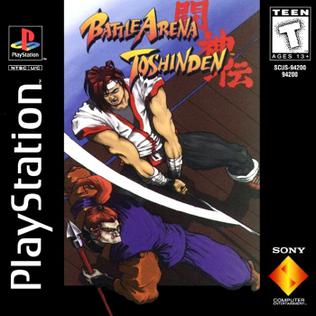 W
WBattle Arena Toshinden is a weapons-based fighting game developed by Tamsoft and published by Takara and Sony Computer Entertainment in 1995 for the PlayStation, followed by 1996 ports for the Sega Saturn, Game Boy and MS-DOS. It was one of the first fighting games to boast polygonal characters in a 3D environment, and features a sidestep maneuver which is credited for taking the genre into "true 3D." The Game Boy version of Battle Arena Toshiden despite sharing the same name as the console & PC counterparts is a different game. It is a 2D weapons based fighter and supports the Super Game Boy cartridge peripheral for the Super Nintendo Entertainment System/Super Famicom to allow the game to be played on a TV with colour palettes and borders.
 W
WBattle Arena Toshinden 2 is a weapon based 3D fighting game developed by Tamsoft. It was released for the PlayStation and arcades in 1995, with the arcade version published by Capcom, followed by a port to PC. It is the sequel to Battle Arena Toshinden, and was a departure from the usual fighting game formula in that it was developed for home console first, with the arcade version being developed later. In some countries the arcade version was also released after the PlayStation version.
 W
WBattle Arena Toshinden 3 for PlayStation is a 3D weapons-based fighting game and sequel of Battle Arena Toshinden 2. Toshinden 3 is the first of the main series not to be ported to other platforms. It is also the only game in the series that has game play differences between the Japanese version and subsequent U.S. and European releases.
 W
WBattle B-Daman is a manga series by Eiji Inuki which ran in CoroCoro Comics by Shogakukan from 2002 to 2005. An anime adaptation was released in January 2004 in Japan, replacing Explosive Shoot Beyblade G Revolution in its 18:00 timeslot. It premiered in the United States in April 2005. Like its predecessor, it is themed around an enhanced version of a traditional children's game – whereas Beyblade was based around spinning tops, Battle B-Daman is a dramatized version of marbles. It is the first show of the B-Daman series to be dubbed in English. In Japan, the second season, titled Battle B-Daman: Fire Spirits! , was superseded by Crash B-Daman, a new series with an all new cast and story.
 W
WChoro Q Park is a 1998 racing video game developed by Nextech and published by Takara for the Sega Saturn. It is based on Takara's Choro Q line of pullback racer toys.
 W
WChoroQ is a PlayStation 2 game published by Atlus in the US, Zoo Digital Publishing in PAL regions and Takara in Japan. It was developed by Barnhouse Effect. The game is marketed as a "Car-PG": a hybrid of driving and role-playing video games.
 W
WCyber Spin is a futuristic racing video game that was released in 1992 to Japan and North America for the Super NES. It is known in Japan as Shinseiki GPX: Cyber Formula which is based on the anime Future GPX Cyber Formula, and because of that, it has the proper license to use the characters from the anime.
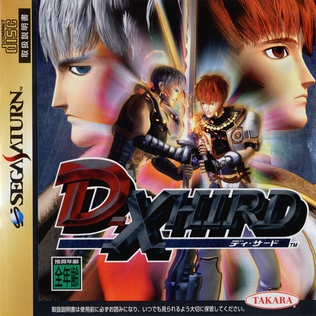 W
WD-Xhird is a 3D weapons-based fighting game developed by Nextech and published by Takara, the same companies that created the Battle Arena Toshinden series, which the game is inspired from. The endings for the characters teased a sequel, but it never happened.
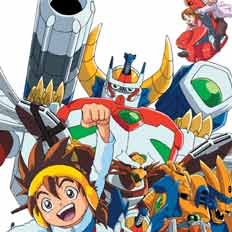 W
WDaigunder is a Japanese anime television series about humans using robots in tournaments. Created by Aeon and Takara and animated by Brain's Base, the studio’s first television production, the series aired on TV Tokyo from April to December 2002. A series of Daigunder toys were produced that could interact with TV screens.
 W
WDreamMix TV World Fighters is a crossover fighting video game developed by Bitstep and published by Hudson for the GameCube and PlayStation 2 in Japan on December 18, 2003. The game features characters from Hudson and Konami's video game series and Takara's toy lines.
 W
WDuel Masters is a media franchise consisting of a manga, several anime series, a trading card game and several video games. The original manga, accompanied with his sequels, sold 4.5 million copies in Japan.
 W
WDuel Masters is a media franchise consisting of a manga, several anime series, a trading card game and several video games. The original manga, accompanied with his sequels, sold 4.5 million copies in Japan.
 W
WDuel Masters is a media franchise consisting of a manga, several anime series, a trading card game and several video games. The original manga, accompanied with his sequels, sold 4.5 million copies in Japan.
 W
WDuel Masters is a media franchise consisting of a manga, several anime series, a trading card game and several video games. The original manga, accompanied with his sequels, sold 4.5 million copies in Japan.
 W
WEarthworm Jim 2 is a 1995 run and gun platform video game and the sequel to Earthworm Jim, and the second and final game in the Earthworm Jim series developed by original creators Doug TenNapel, David Perry, and Shiny Entertainment. It was released in late 1995 and early 1996 depending on region and video game console, initially being released for the Sega Genesis and Super Nintendo Entertainment System, before being ported to other platforms.
 W
WFatal Fury, known as Garō Densetsu in Japan, is a fighting game series developed by SNK for the Neo Geo system.
 W
WFatal Fury Special, known as Garō Densetsu Special in Japan, is a 1993 fighting game developed and published by SNK and originally released for the Neo Geo arcade and home platforms. It is an updated version of 1992's Fatal Fury 2, introducing several changes to the gameplay system while expanding the available character roster.
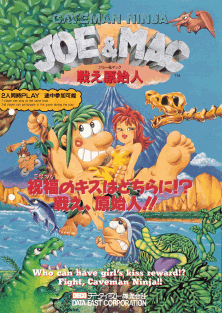 W
WJoe & Mac, also known as Caveman Ninja and Caveman Ninja: Joe & Mac, is a 1991 platform game released for arcades by Data East. It was later adapted for the Super NES, Mega Drive/Genesis, Nintendo Entertainment System, Game Boy, Amiga, Zeebo, Nintendo Switch, and PC.
 W
WThe King of Fighters '95 is a fighting game produced by SNK for the Neo Geo arcade and home consoles in 1995. It is the sequel to The King of Fighters '94 and the second game in The King of Fighters series. It is also the first game in the series to be ported to other home consoles besides the Neo Geo AES and Neo-Geo CD thus making SNK a second-party developer, with versions released for the PlayStation, Sega Saturn and Game Boy. It was also rereleased in The King of Fighters Collection: The Orochi Saga in 2008 for the PlayStation 2, PlayStation Portable and Wii.
 W
WThe King of Fighters '96 is a fighting game released by SNK for the Neo Geo arcade and home consoles in 1996. It is the third game in The King of Fighters series, following The King of Fighters '95. Like its predecessor, the game was ported to the Neo-Geo CD, as well as the PlayStation and Sega Saturn. Unlike the previous game, the PlayStation and Saturn versions were released only in Japan, with a language setting allowing the player to set the game to English. It is also part of the compilation The King of Fighters Collection: The Orochi Saga for the PlayStation 2, PlayStation Portable and Wii. It was also released on the Wii Virtual Console in Japan on February 15, 2011, in North America on July 12, 2012 and in the PAL region on November 22, 2012.
 W
WKing of the Monsters is a fighting game developed by SNK, released for arcades in Japan in 1991, and ported to the Neo Geo AES later that same year. The game features playable giant monsters that are reminiscent of characters from kaiju and tokusatsu films.
 W
WKing of the Monsters 2 is a fighting/wrestling game released on May 5, 1992 by SNK. It is a sequel to the 1991 game King of the Monsters. In this game three of the previous game's surviving monsters return and battle across the Globe against giant alien monsters that threaten the Earth. The game was later ported to the Super NES and Sega Genesis by Takara.
 W
WLost Word of Jenny , styled on-screen as Lost Word of JeNnY, is a map-based action video game for the Family Computer which was released in 1987.
 W
WMicroman was a science fiction toyline created, manufactured and marketed by Takara Co., Ltd. from 1974 to 1984 as well as from 1998 to 2007. The Microman line was a series of 3.75-inch-tall (9.5 cm) action figures with accompanying vehicles, robots, playsets and accessories. Unlike other toylines at the time, Microman figures were marketed as being the "actual" size of cyborg beings called "Micros" that hailed from a fictional planet known as "Micro Earth" and disguised themselves as action figures while on planet Earth.
 W
WPalamedes is a puzzle video game released by Taito in 1990.
 W
WPenny Racers is a racing game for the Nintendo 64. It was released in Japan in 1998 and in North America and Europe in 1999. The game is part of the Japanese racing game series Choro Q and is known by the name Choro Q 64 in Japan.. The game had a Nintendo 64 sequel released only in Japan, Choro Q 64 2: Hachamecha Grand Prix Race. It is a customizable racer game, it has a total of 114 Parts, arranged in eight categories.
 W
WPrincess Maker (プリンセスメーカー) is a series of social simulation bishōjo games where the player must act as a parental figure and raise a young girl. The series was produced by the video game and anime production company Gainax. The first Princess Maker, while popular enough to be translated into Chinese, was never released in the United States. Princess Maker 2 was translated by SoftEgg for a North American release, but this release was cancelled because publisher Intracorp went bankrupt. Princess Maker 3, Princess Maker 4, and Princess Maker 5 have subsequently been released, as did several spin-off games. The series has been translated and released in Korea (Fujitsu) and Taiwan (Kingformation). An English release of Princess Maker 2 was attempted in mid-90s, but it resulted in failure, and no games in this series were released in English until Princess Maker 2 Refine in 2016. Petite Princess Yucie, an anime series loosely based on the third game but with characters from all previous games, ran for 26 episodes in 2002–2003.
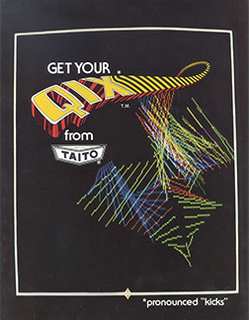 W
WQix is a 1981 puzzle video game developed by husband and wife team Randy and Sandy Pfeiffer and published in arcades by Taito America. Qix is one of a handful of games made by Taito's American division. At the start of each level, the playing field is a large, empty rectangle, containing the Qix, a stick-like entity that performs graceful but unpredictable motions within the confines of the rectangle. The objective is to draw lines that close off parts of the rectangle to fill in a set amount of the playfield.
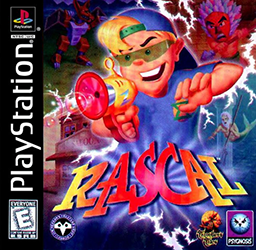 W
WRascal is a platform game developed by Traveller's Tales and published by Psygnosis for the PlayStation. The main character and several enemies were designed by Jim Henson's Creature Shop.
 W
WReal Pool, known in Japan as EX Billiards , and in Europe as International Cue Club, is a video game developed by Astroll and published by Takara and Infogrames in 2000, and by Midas Interactive Entertainment in 2003 for PlayStation 2. This is a retooling of a Microsoft Windows and Mac OS game, also called Real Pool, which was developed by GT Interactive and published by WizardWorks in August 1998.
 W
WRoad Trip Adventure, also known as Road Trip or Choro Q HG 2, is a racing adventure video game for the PlayStation 2 developed by E-game. The game was released in 2002 in Japan by Takara, in North America by Conspiracy Entertainment, and in 2003 in Europe and other PAL regions by System 3 under their Play It label.
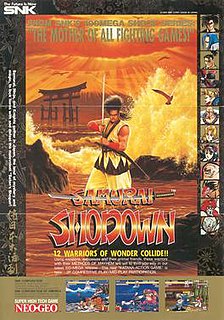 W
WSamurai Shodown, known in Japan as Samurai Spirits, is a competitive fighting game developed and published by SNK for their Neo Geo arcade and home platform. Released in 1993, it is the first installment in the Samurai Shodown series. In contrast to other fighting games at the time, which were set in modern times and focused primarily on hand-to-hand combat, Samurai Shodown is set in feudal-era Japan and was SNK's first arcade fighting game to focus primarily on weapon-based combat.
 W
WSamurai Shodown III: Blades of Blood was released in the arcades on November 15, 1995. It is the third game in SNK's Samurai Shodown series of fighting games. While it is the third game in the main series, it is the first part of a two-chapter story that is chronologically set between the events of Samurai Shodown and Samurai Shodown II.
 W
WSeek and Destroy, known in Japan as Shin Combat Choro Q , is an action game for the PlayStation 2 released by Takara Co Ltd and published and licensed by Play it Ltd. It is a 1-2 player vehicular combat game, with over 100 tanks and over 100 upgrades to choose from. It Involves upgrading and customizing your tank to progress through the game and meet the specific needs of the mission/map,(including optional mini-games).
 W
WSpace Harrier is a third-person arcade rail shooter game developed by Sega and released in 1985. It was originally conceived as a realistic military-themed game played in the third-person perspective and featuring a player-controlled fighter jet, but technical and memory restrictions resulted in Sega developer Yu Suzuki redesigning it around a jet-propelled human character in a fantasy setting. The arcade game is controlled by an analog flight stick while the deluxe arcade cabinet is a cockpit-style hydraulic motion simulator cabinet that tilts and rolls during play, for which it is referred as a taikan (体感) or "body sensation" arcade game in Japan.
 W
WTatsunoko Fight is a fighting video game developed by Electronics Application (Eleca) and published by Takara for the PlayStation game console released in Japan in October 2000. It features characters from various Tatsunoko superhero properties in addition to original creations developed exclusively for the game. Each series is represented by characters, backgrounds, music, and voice actors from the original television programs, along with new art and animated sequences produced by Tatsunoko Production.
 W
WTokyo Mew Mew is a Japanese manga series created and written by Reiko Yoshida and illustrated by Mia Ikumi. It was originally serialized in Kodansha's shōjo manga magazine Nakayoshi from September 2000 to February 2003, with its chapters collected in seven tankōbon volumes by Kodansha. It focuses on five girls infused with the DNA of endangered animals which gives them special powers and allows them to transform into "Mew Mews". Led by Ichigo Momomiya, the girls protect the earth from aliens who wish to "reclaim" it.
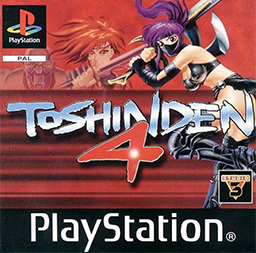 W
WToshinden 4 is the fourth and final installment of the fighting game series Battle Arena Toshinden. Unlike previous installments, it only saw release in Japan and the PAL region. It was released a total of three times in Europe; it originally came out on June 30, 2000, and was re-released on the Virgin Interactive white label range on April 12, 2001, and was re-released again by budget label Play It, on November 20, 2003.
 W
WTransformers: Mystery of Convoy is a 1986 video game developed by ISCO and published by Takara in Japan for the Famicom. It is based on the popular toyline Transformers. The game was made available on the Wii's Virtual Console service on June 10, 2008.
 W
WTransformers: The Headmasters is a Japanese anime television series that is a part of the Transformers robot superhero franchise. It aired from July 3, 1987 to March 25, 1988, and its 17:00–17:30 timeslot was used to broadcast Mashin Hero Wataru at the end of its broadcast.
 W
WUtsurun Desu.: Kawauso Hawaii e Iku!!! is a video game for the Nintendo Famicom based on the popular Japanese manga character from the 1980s "the otter man", Kawauso-kun from Sensya Yoshida's series Uturun Desu.. The game was published in 1992 by Takara.
 W
WWerewolf: The Last Warrior, known in Japan as Super Werewolf Chronicle Warwolf , is a Nintendo Entertainment System platform game about a werewolf that made its debut on November 16, 1990 in North America. It starred a werewolf character named "Warwolf".
 W
WWorld Heroes 2 is a 1993 fighting arcade game developed and published by ADK with the assistance of SNK. It was originally released for the Neo Geo MVS arcade cabinet on April 26, 1993. It is the sequel to the 1992 fighting arcade game World Heroes, as well as the second title of the World Heroes series. It was even the first game with the "ADK" logo labeled within the game after the developer changed from its previous name "Alpha Denshi"; however, the "Alpha" logo was last used on one of the arcade flyers of World Heroes 2.
 W
WWorld Heroes 2 Jet is a 1994 fighting arcade game developed and published by ADK with the assistance of SNK. It was originally released for the Neo Geo MVS arcade cabinet on April 26, 1994. It is the sequel to the 1993 fighting arcade game World Heroes 2, as well as the third title of the World Heroes series.